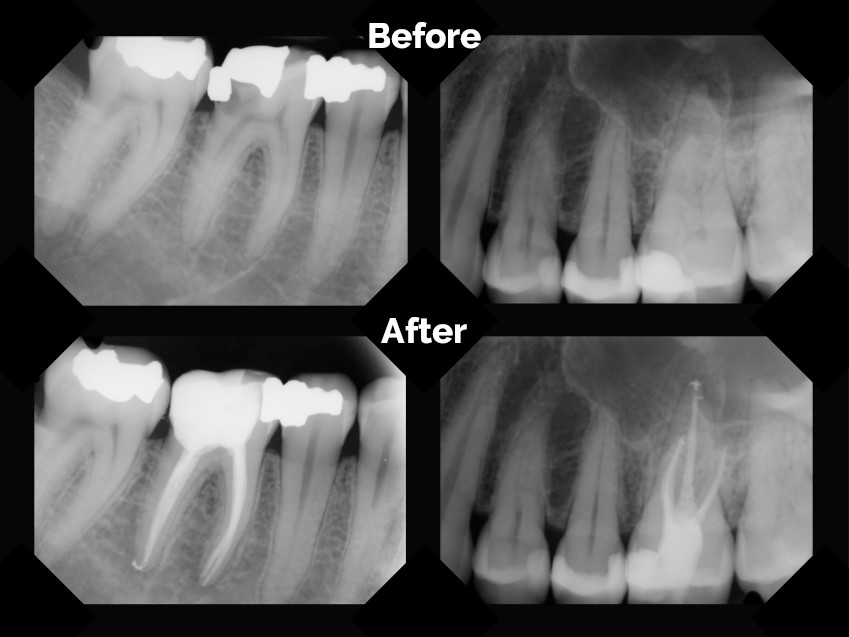Root canal therapy is needed when the pulp tissue (nerve, vascular, lymph tissue) of a tooth is affected by decay, infection, or trauma. In order to save the tooth, the pulp, bacteria, and any decay are removed and the resulting space is filled with special, medicated dental materials, which restore the tooth to its full function.
Depending on the tooth, it can typically have one to four canals. Rarely, there can be more. The number of canals in the tooth and curvature determines how long the procedure will take.
Having a root canal preformed on a tooth is the treatment of choice to save a tooth that otherwise would have to be removed. Many patients believe that removing a tooth that is problematic is the solution, but what is not realized is that extracting (pulling) a tooth will ultimately be more costly and cause significant problems for the adjacent teeth.
Signs and symptoms for possible root canal therapy
- An abscess (or pimple) on the gums
- Prolonged sensitivity to hot and cold
- Severe toothache pain
- Sometimes no symptoms are present
- Swelling and/or tenderness
- Pain that wakes you up at night
- Spontaneous pain
- Pain with chewing
Reasons for root canal therapy
- Decay has reached the tooth pulp (the living tissue inside the tooth)
- Infection or abscess have developed inside the tooth or at the root tip
- Injury or trauma to the tooth
- Irreversible inflammation to the pulp
Root Canal Procedure
A root canal procedure requires one or more appointments and can be performed by a dentist or endodontist (a root canal specialist).
While the tooth is numb, a rubber dam (a sheet of rubber) will be placed around the tooth to keep it dry and free of saliva. An access opening is made on top of the tooth and a series of root canal files are placed into the opening, one at a time, to clean and shape the canals of each root. Special cleansers and antimicrobial agents are used to prepare the inner surface of the root for the filling material.
Once thoroughly cleaned and shaped, the tooth is filled and sealed. Usually a temporary filling is placed and you will be scheduled to have a crown placed on the tooth.
After treatment, your tooth may still be sensitive, but this will subside as the inflammation diminishes and the tooth has healed. You will then be given care instructions after each appointment. Good oral hygiene practices and regular dental visits will aid in the life of your root canal treatment.


